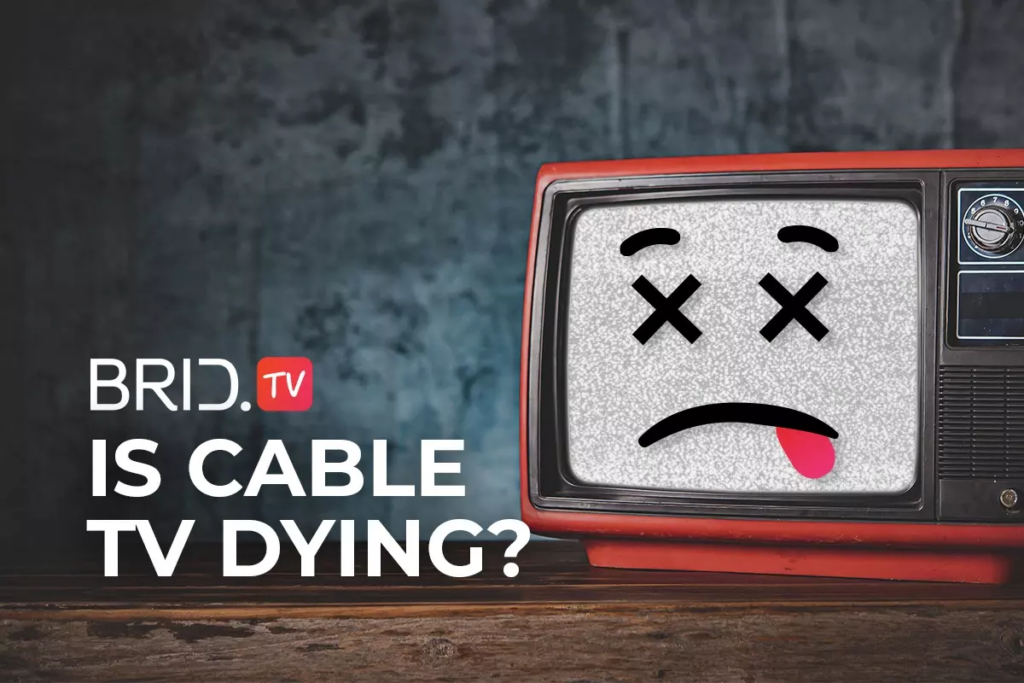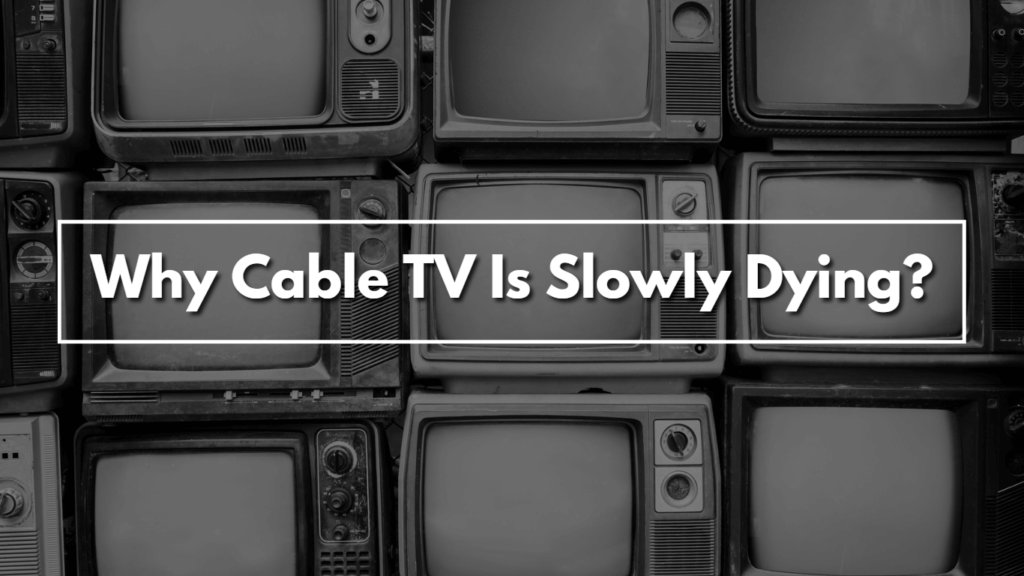For decades, cable TV has been the dominant way most households access familiar channels and programming. But with the rise of streaming services, declining subscribers, and shifting viewer habits, many wonder if traditional cable TV is dying a slow death.
This article examines the factors shaping cable’s uncertain future and what the television landscape may look like in the coming years.

The Decline of Cable TV
There are several troubling signs for the old cable TV model:
- Falling subscribers – Cable subscriber numbers have dropped nearly 10% in the last decade, with over 15 million households cutting the cord. An increasing share of consumers are choosing to ditch traditional cable bundles.
- Rise of streaming – Online streaming now accounts for over 25% of TV viewing. Services like Netflix, Hulu, Disney+, and others are pulling eyes away from cable.
- Aging audiences – Cable viewership declines fastest among younger audiences, who prefer on-demand and mobile streaming options. The median age of cable news viewers is 65.
- Unbundling – Consumers have been increasingly shifting to cheaper skinny bundles and picking and choosing individual streaming services instead of paying for huge cable packages.
- Cost – The average cable bill now tops $100/month and continues rising, pricing out many lower-income households. Streaming is generally cheaper.
Combined, these forces paint a bleak picture for the cable sector – one of technological irrelevance and eroding audiences. But cable is far from dead yet.
Reasons Cable TV Remains Resilient
While the numbers point towards eventual demise, cable TV still has some significant factors working in its favor for now:
- Exclusive live sports – Cable networks have long-term broadcast rights deals for live sports like NBA, MLB, March Madness, WWE, etc that many viewers still want to watch in real-time.
- News content – Many older audiences still turn to cable news networks like CNN, Fox News, and MSNBC as their primary news source.
- Channel variety – Cable offers diverse niche channels that streaming can’t always match, from Food Network to Discovery to MTV.
- Universal availability – Cable infrastructure still means it’s widely available to consumers across different areas, unlike spotty broadband required for quality streaming.
- Bundling with Internet plans – Many cable providers bundle TV and Internet service to keep subscribers. For current customers, canceling cable may mean paying more just for the Internet.
- Older audiences slower to cut the cord – While younger viewers are fleeing, older audiences still cling to familiar cable packages and most haven’t transitioned to streaming.
So while the long-term trajectory is negative, cable TV won’t disappear entirely for a while thanks to these factors. However, the industry will have to innovate to stop the subscriber exodus.

How Can Cable TV Evolve and Compete?
To combat streaming competition and remain relevant, cable providers are exploring new technologies and service models:
- Enhanced on-demand libraries – Cable companies are bulking up VOD libraries to provide greater viewing flexibility competitive with Netflix and Hulu.
- TV Everywhere apps – Improving OTT streaming apps like Xfinity Stream and Spectrum TV to allow multi-device live streaming with a cable package.
- More a-la-carte options – Providing affordable TV tiers with smaller channel bundles and allowing consumers to better customize packages to their interests.
- Incorporating streaming – Adding services like Netflix and Amazon Prime Video into cable boxes and bundles so consumers can access all video through their cable provider.
- Upgrading broadband speeds – Boosting broadband performance and caps to support streaming-first lifestyles and ever-growing bandwidth demands.
- Targeted promotions – Limited-time discounted bundles aimed at winning back younger cord-cutting audiences through promotions on social media and streaming ads.
- Addressing costs – Controlling programming and hardware costs to make packages more affordable for consumers.
It remains to be seen how effective these strategies will be. But cable companies will fight tooth and nail to keep their cherished subscriber revenues flowing.
What Will the Future TV Landscape Look Like?
In the next 5-10 years, television is likely to transition towards a hybrid ecosystem with blurred lines between cable and streaming:
- Most households will use a mix of services – subscribing to a few streaming options while maintaining a skinny cable bundle for key channels and live sports.
- More apps, fewer boxes – Consumers will move away from renting traditional set-top cable boxes, opting for streaming through smart TVs and mobile apps.
- The rise of vMVPDs – Services like YouTube TV, Sling TV, and Hulu Live will become the standard cable TV replacement for many mainstream audiences seeking live TV without the cost of traditional pay TV.
- Consolidation and partnerships – Legacy media/telecom giants will acquire hot streaming apps while bundling streaming services into their packages. Disney+ bundled with Verizon Fios is one example.
- Live sports fragmentation – Leagues will sell smaller packages of live games directly to consumers via streaming, reducing cable’s sports dominance.
- Faster broadband – Upgraded fiber and 5G networks will enable high-quality streaming, cable, and gaming services for most households.
- Shrinking bundles – Economic pressures will force cable companies to offer cheaper packages focused on news, sports, and other live programming that streaming can’t replace. Niche cable channels will diminish.
While cable TV as we long knew it will eventually fade, it still has an important role in facilitating the transition toward this new hybrid streaming-focused TV universe.

Frequently Asked Questions (FAQ)
Q1. Will cable TV be obsolete soon?
Ans. Cable TV still retains enough exclusive sports, news, and niche channel content that it won’t be obsolete anytime soon. But its importance will diminish over 5-10 years as streaming alternatives keep improving. Most consumers will likely shift to a mix of streaming services and cheaper skinny cable bundles.
Q2. What percentage of households have cable TV today?
Ans. According to recent estimates, around 65% of U.S. households still subscribe to some form of traditional cable TV service today. However, the number of total cable subscribers has dropped by over 15 million in the last decade, showing a long-term decline.
Q3. Why do people still have cable?
Ans. The main reasons people still pay for cable are live sports coverage, familiar news networks, access to niche cable channels, bundling with Internet service leading to higher standalone Internet prices, slower streaming adoption by older audiences, and universal availability of cable infrastructure.
Q4. What is replacing cable TV?
Ans. The two main alternatives replacing traditional cable are on-demand streaming services like Netflix and Hulu, along with live TV streaming “skinny bundles” from providers like YouTube TV and Hulu Live. Many consumers are switching to this combination of streaming apps and live TV replacements.
Q5. Will live streaming kill cable?
Ans. Live streaming alone won’t kill cable, since most streaming still lacks live sports and news that cable relies on. However, the combination of on-demand apps reducing entertainment viewership and proliferating live TV streaming bundles eroding cable’s advantages will likely doom the old cable model long-term.




